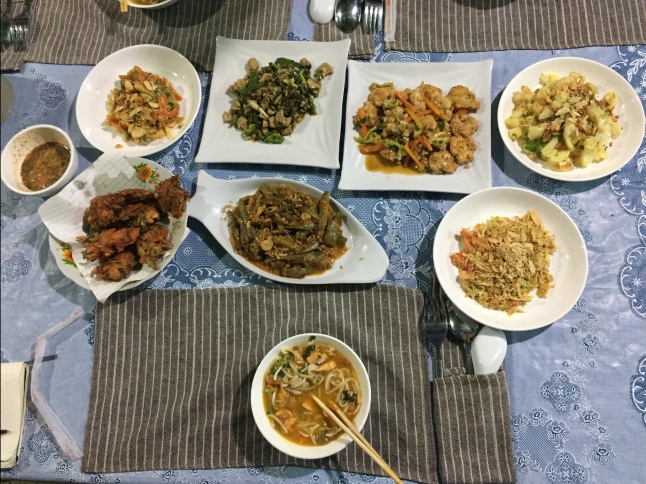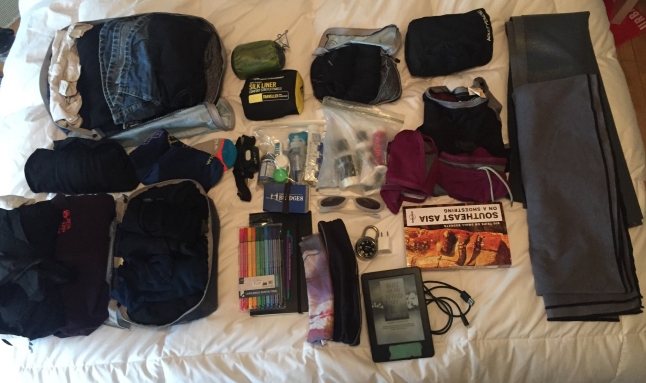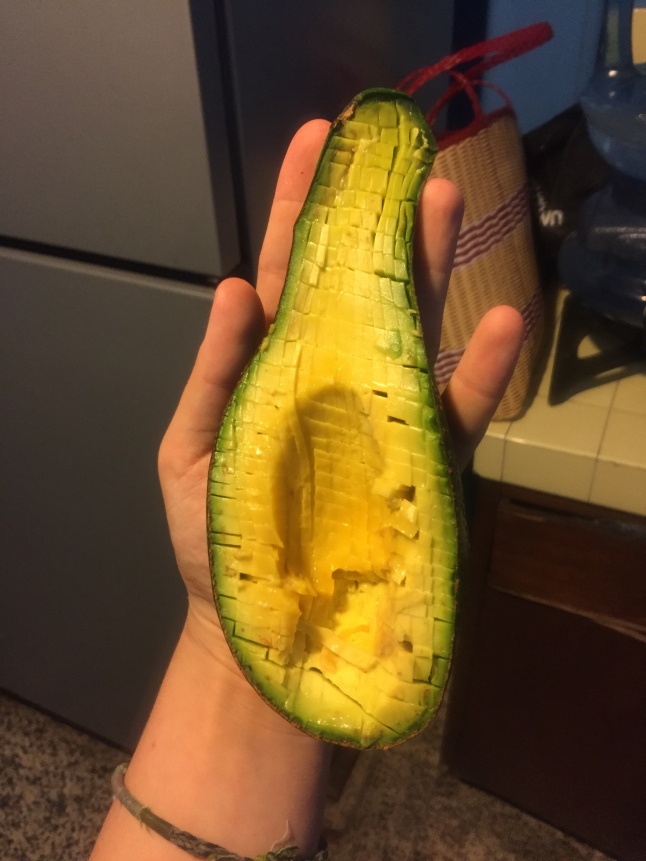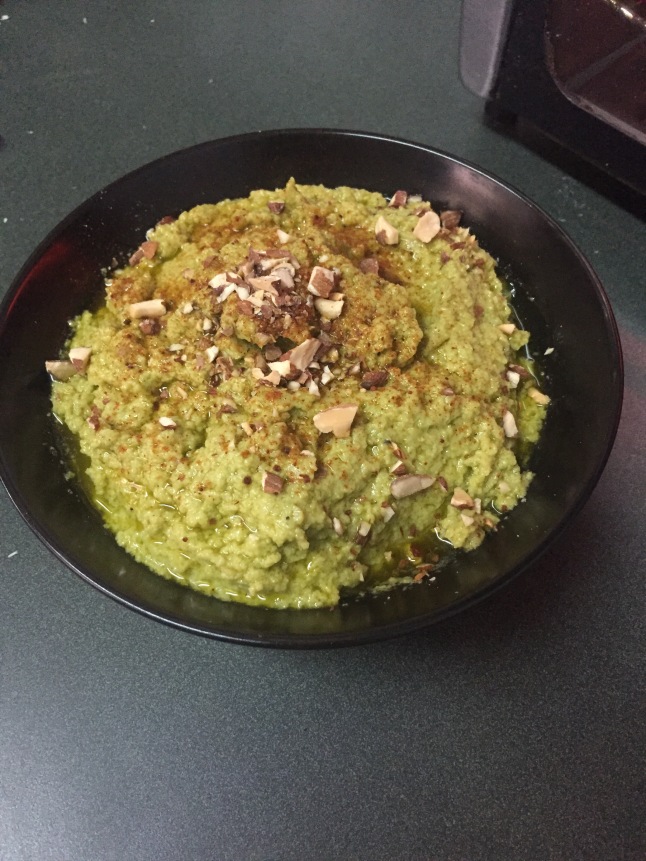
Last October I ran 26.2 miles through 29 of Chicago’s neighborhoods with 45,000 other runners. The day was ideal with temperatures in the lower 50s, and cheering, bundled crowds seemed to pack every block of those 26 miles.
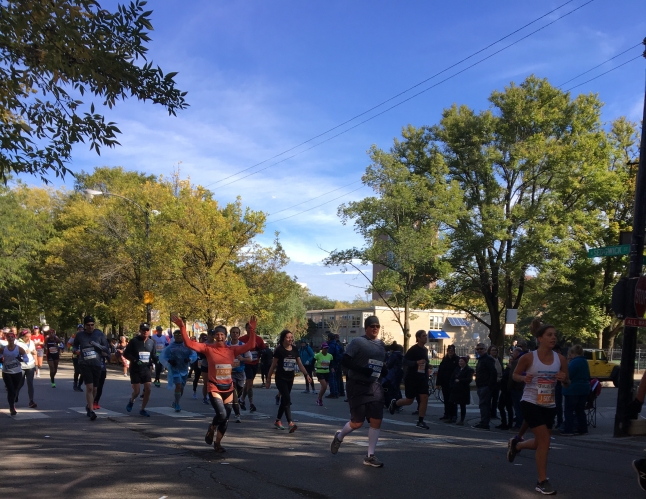
Beginning in June, I started with this training plan after reading every book I could check out from the Madison Public Library system about marathon training and nutrition for endurance athletes. The plan comes from a book by Matt Fitzgerald, and he lists plans for athletes of all levels who are training for a marathon.

And, while this plan worked for me, it did not come without its challenges. Before starting the program, I struggled with Runner’s Knee for several months until I went to see an athletic trainer, who armed me with exercises to strengthen my legs. I realized if I wanted to run the marathon without feeling like my knees were going to fall off, I should probably do something about it.
*** I am not a MD nor PT, so while this might help other amateur runners struggling with knee issues, consult your own doc/PT person for better advice! The exercises I used are linked below***
Healing was hard! Going from a regular routine of running to a mindset of healing was a mental switch. I didn’t run for two weeks while doing the first set of exercises, which I did 3-4 times each week. Foam rolling became my new best friend. When I went back to see the trainer two weeks later, she gave me a second set of exercises to focus more on strength and mobility, and I started to incorporate very short, slow runs back into my routine.
It worked. My runner’s knee went away and the majority of my training was fun and pain-free. I went back to the exercises every so often, and as my training intensified, my dedication to the resistance bands waned.
In late August I completed my first sprint triathlon, and in fear of missing even one long run, I ran 11 miles the next day. In a pivotal moment, I immediately regretted my aversion to a rest day, and my leg muscles tightened up in a way that made running uncomfortable until I was warmed up. I hit the foam roller after every run, turning to lacrosse balls for more directed pressure-point attention. The tightness persisted, and even after a sports massage that reduced my discomfort by a significant amount, it did not fully go away. I felt stubbornly too far along in my training and too close to the marathon to rest. In hindsight, resting more would have been so much better than sticking rigidly to my training plan.
Running the actual Chicago marathon was not without discomfort from the tight TFL and calf muscles, but the training was well worth it and I didn’t feel fatigued until the last 5k or so. Plus, the 1.2 million people cheering you on gives you rock-star status for many hours!
Post-marathon, I tried to heal again. I saw athletic trainers who told me I had Peroneal tendonitis from marathon-training-overuse (see above stubborn wont-take-rest-days) and they gave me some exercises (resistance band stuff) while I turned more to swimming, yoga, and weight training. After two months of building strength and flexibility, my legs felt ready to run once again!
 10:30 a.m. Arrived at Hamarikyu Gardens and walked around for over an hour! Saw beautiful flowers, trees, and reconstructed teahouses
10:30 a.m. Arrived at Hamarikyu Gardens and walked around for over an hour! Saw beautiful flowers, trees, and reconstructed teahouses 11:45 a.m. Walked over to the Tsukiji Market, the Tokyo Fish market, and had sushi at a very small sushi bar. Tried a sampling of eel, shrimp, urchin, roe, egg, tuna, scallop, and more tuna sushis. The fish was SO fresh, and buttery-melt-in-your-mouth delicious. We walked around the market for quite awhile afterward.
11:45 a.m. Walked over to the Tsukiji Market, the Tokyo Fish market, and had sushi at a very small sushi bar. Tried a sampling of eel, shrimp, urchin, roe, egg, tuna, scallop, and more tuna sushis. The fish was SO fresh, and buttery-melt-in-your-mouth delicious. We walked around the market for quite awhile afterward.












